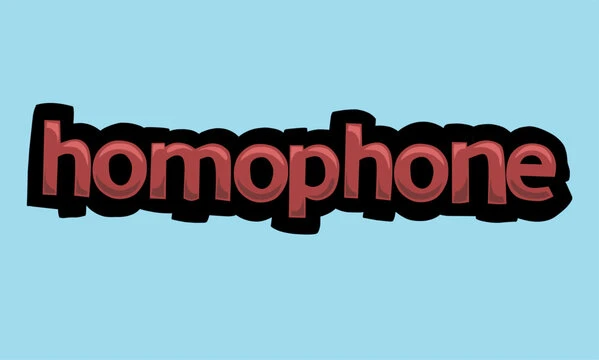Table of Content
Know the Differences Between Similar Looking Homophones
Being a writer, you need to be aware how to use homophones in different types of sentences. These words are very tricky because they usually sound same, but offer completely different meanings. A popular examples in this regard is how you use bear with me or bare with me. At first, you would think that both of them look the same, but basically, they are completely different. This is a key analysis that should be done wisely, because a little mistake can change the whole context of the sentence.
A lot times, amateur writers do not know about these things. They make little mistakes while selecting homophones like these, which is what contextual and grammatical blunders in their writing. It is therefore advised to always take article writing services from professional agencies, as they ensure to produce quality content free from all types of errors. Whether its about to choose bear with me or bare with me, professional writers understand all types of homophones and their exact usage in particular sentences.
In this blog, we will discuss more about homophones to let you know how they should be first understood, then used in particular sentences. Let’s start from the basics understanding what are homophones and why they often confuse many writers.
What are Homophones?

Homophones are words that sound the same when pronounced but have different meanings, spellings, or both. They are a subset of homonyms and occur in many languages, often causing confusion in writing and verbal communication. For example, the English words “their,” “there,” and “they’re” are homophones because they sound identical but differ in meaning and usage. Such power words highlight the complexity and richness of language, where context plays a crucial role in determining meaning.
Homophones are commonly used in wordplay, and riddles due to their potential for creating puns and double meanings. Writers and speakers often exploit homophones to add humor or ambiguity. This linguistic phenomenon is not just a playful aspect of language but also a challenge for language learners who need to grasp subtle differences in spelling and usage.
In practical communication, homophones can lead to misunderstandings or errors, especially in written text. For instance, confusing “to,” “too,” and “two” can result in sentences that are grammatically incorrect or unclear. Proofreading and careful attention to context are essential to avoid such mistakes. Homophones also highlight the importance of phonetics in language and demonstrate how pronunciation alone cannot fully convey meaning without additional cues like spelling or context.
Key Difference Between Bear and Bare
The word “bear” is not only recognized as the name of a large, furry animal commonly associated with forests and wilderness, but it also functions as a versatile verb. As a verb, bear conveys a range of meanings tied to tolerance, endurance, and carrying. Additionally, bear can mean to carry or support something, whether physically or metaphorically. Its usage as a verb often emphasizes strength and the ability to sustain or endure various burdens.
In contrast, bare serves as both an adjective and a verb, offering a completely different set of meanings. When used as an adjective, bare describes something that is minimal, exposed, or lacking coverings or supplies. It also refers to physical exposure, such as bare feet, which are uncovered by shoes or socks. These uses of bare evoke images of simplicity, emptiness, or lack.
As a verb, bare carries the specific meaning of uncovering or revealing something, often in a literal or figurative sense. The verb bare often implies a deliberate act of making something visible that was previously hidden or concealed. Together, “bare” as an adjective and verb emphasizes the themes of exposure, minimalism, and revelation, distinctly separating it from the meanings associated with bear.
Origins of Bear with Me
Many people mistakenly believe that the phrase “bear with me” originated from the works of William Shakespeare. While it is true that the idiom appears in Shakespeare’s writings, he did not coin this expression. Instead, its presence in his plays and poetry reflects the common language and idiomatic expressions of the Elizabethan era. Shakespeare often incorporated the vernacular of his time into his work, which is one reason his writing still continues to resonate with audiences across the world.
The verb “to bear” in the phrase bear with me has its roots in Old English and was widely used long before Shakespeare’s time. This word means to carry, whether physically, metaphorically, or emotionally. In the idiom, bear with me implies a request for patience or tolerance, asking someone to metaphorically carry the burden of waiting or enduring a delay. This meaning aligns closely with the broader usage of bear as a verb, where it often conveys the idea of sustaining, enduring, or supporting something challenging.
Interestingly, the verb bear is linked to ancient languages, connecting to the Greek word “pherein” and the Latin word “ferre,” both of which also mean to carry or to bear. These weird words highlight the deep history and versatility of metaphors, which has evolved across centuries and languages. The endurance of expressions like bear with me demonstrates how ancient linguistic threads are woven into modern speech, linking contemporary idioms to historical linguistic traditions.
Bear with Me or Bare with Me: What’s Correct?

The correct phrase is “Bear with me.” This expression uses the verb bear, which means to endure or be patient. When someone says bear with me, they are asking for patience while they complete or explain something. For instance, if a presenter experiences technical difficulties during a meeting, they might say, “Please bear with me while I fix this issue.” The word bear in this context aligns with its definition of carrying or tolerating something.
On the other hand, bare with me would imply something entirely different, as the word bare means to expose or uncover. If someone were to use bare with me, it could be interpreted as an invitation to undress or reveal something, which is not appropriate in most situations. This difference in meaning highlights why spelling and word choice matter significantly in communication. Using the correct phrase ensures clarity and avoids unintentional awkwardness or misunderstandings.
Common Examples to Learn From
If you are not sure how to use the metaphor bear with me in a sentence, take a look at the examples given below. It will let you know how this word differs from “bare with me”, and how it can be used in different types of scenarios.
- Please bear with me while I find the file.
- Bear with me as I explain the next steps.
- If you could bear with me, I’ll clarify everything shortly.
- Bear with me; this will only take a moment.
- Kindly bear with me while I resolve the issue.
Frequently Asked Questions
| What are homophones? Homophones are words that sound the same but have different meanings, spellings, or both, such as bare and bear. They are a type of homonym distinguished by their pronunciation similarity despite differing usage. |
| Why homophones are confusing? Homophones are confusing because their identical pronunciation can lead to misunderstandings in spoken communication. Additionally, in writing, people may mistakenly use the wrong spelling, causing errors and ambiguity. |
| What is the difference between bear and bare? The word bear refers to a large mammal or can mean to carry or endure something. In contrast, bare means uncovered, exposed, or minimal. |
Final Words
That brings us to the end of this blog in which we have discussed key differences between a very confusing homophone i.e. “bear with me or bare with me”. A lot of times, people become puzzled while looking at the similar nature of such homophones. It is therefore best recommended to understand the meaning of every word while evaluating these type of words. It clears a lot of confusion, allowing writers to make the correct decision keeping in view the whole context of the sentence.
This article has defined various points that would definitely help you to understand the difference between bear and bare. Though both of these words might sound the same, but their different meanings completely alters their usage in any sentence.

Unleash your brand story`s potential with eContentSol – your creative writing companion. We craft narratives that captivate. Ready to elevate your content game? Dive into creativity with us and let`s bring your ideas to life.


